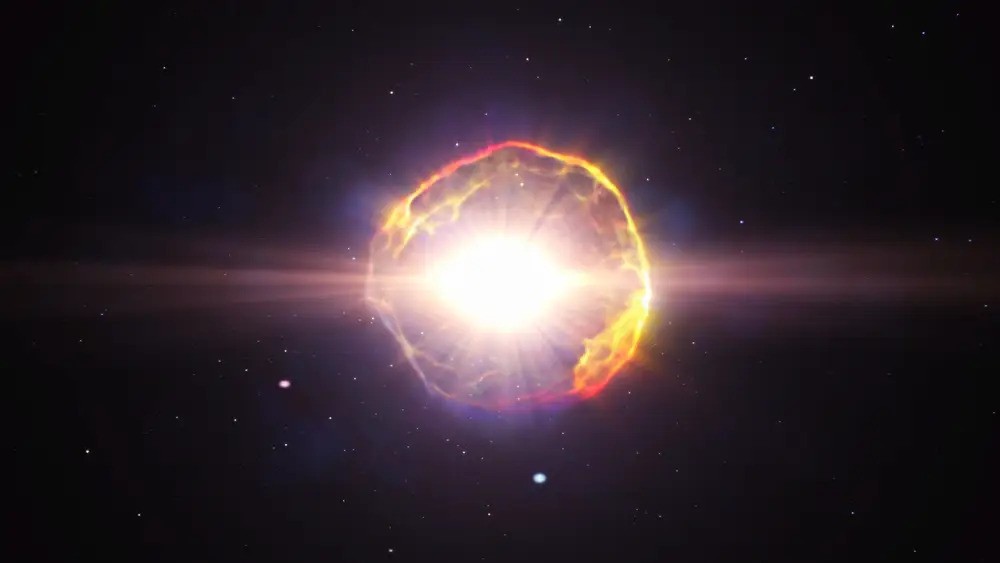We often identify the nova eruption with a luminary in the sky. However, much of the radiation is actually from the waves we can’t see: x-rays and gamma rays. Recently, scientists have been able to investigate this question.

Discovery of a nova V1716 Scorpio
Astronomers from China and Taiwan have observed the nova eruption of V1716 Sco, which occurred last year, using various X-ray and gamma-ray observatories. The results of the research campaign, presented June 27 on the arXiv preprint server, provide important information about the evolution of this object.
Nova is a star that experiences a sudden increase in brightness and then slowly returns to its original state, a process that can last many months. Such eruption is the result of an accretion process in a close binary system containing a white dwarf and its companion.
The transformation into a nova V1716 Scorpius was detected when it erupted on April 20, 2023, with a magnitude of 8.0. Further spectroscopic studies on this luminary confirmed it to be a classical (Fe II) nova.
Nova V1716 Scorpio in different spectral bands
Now a team of astronomers led by Huihui Wang of Henan University of Science and Technology in Luoyang, China, has studied V1716 Scorpius in the X-ray and gamma-ray bands. To do this, they used NASA’s Swift, NuSTAR and Fermi spacecraft, as well as the NICER (Neutron star Interior Composition Explorer) spacecraft aboard the International Space Station.
“We conducted a joint analysis of NuSTAR, Swift, NICER, and Fermi-LAT observations of nova V1716 Sco,” the researchers wrote in the paper.
Observations showed that the gamma-ray emission began one day after the V1716 Scorpius optical eruption with a test statistic (TS) value of 70. The duration of this gamma-ray activity with a TS value above 4.0 lasted 40 days. Moreover, harder X-ray emission was also observed by Swift one day after the optical eruption.
These results make V1716 Scorpius the first classical nova in which the Swift X-ray detection matches the gamma-ray emission, and the fourth classical nova in which the gamma-ray emission matches the harder X-ray emission from the NuSTAR data.
X-ray spectrum of the nova V1716 Sco
By analyzing the X-ray spectrum, the researchers found that the hardness ratio decreased rapidly over time, and the observed emission entered the supersoft source (SSS) phase about 40 days after the nova erupted. In addition, the NICER data allowed astronomers to detect quasi-periodic oscillations (QPO) in the SSS phase with a period of 79.10 seconds.
Trying to explain the origin of the detected QPO, the authors of the paper point to spin modulation of the white dwarf as the most plausible hypothesis. However, they note that the modulation period is not stable over time. This could mean that the hot spot region on the surface of the white dwarf may be decreasing with time, or the periodic modulation could be due to another mechanism, such as stellar oscillation.
According to phys.org


